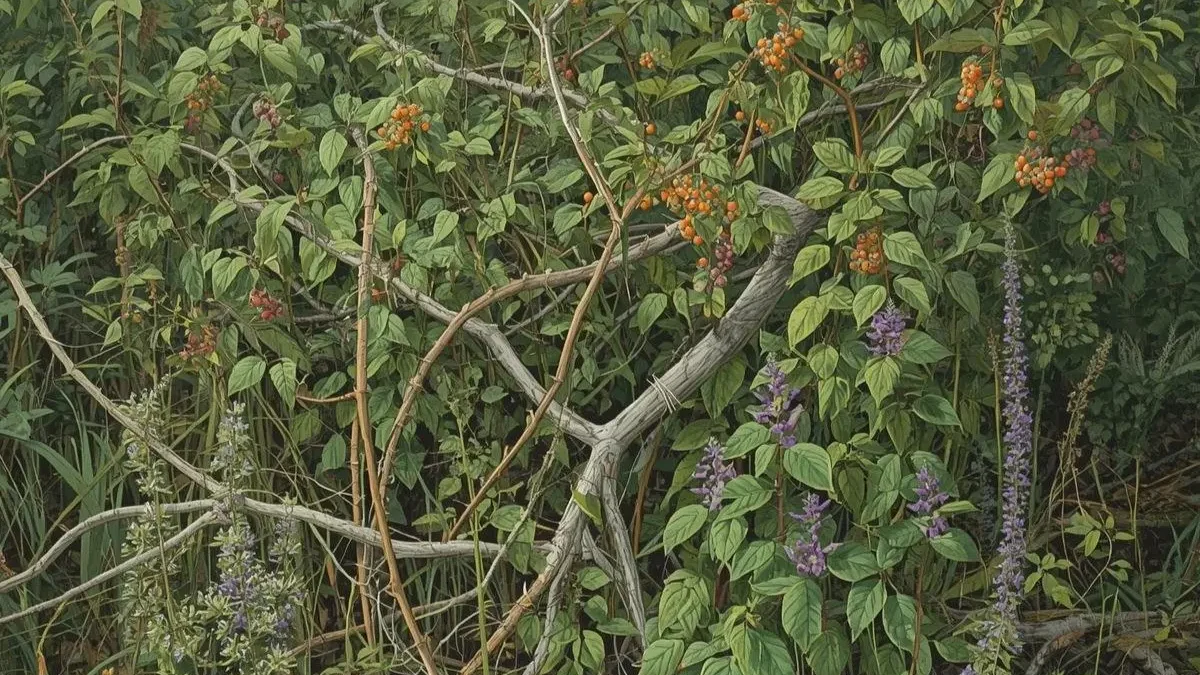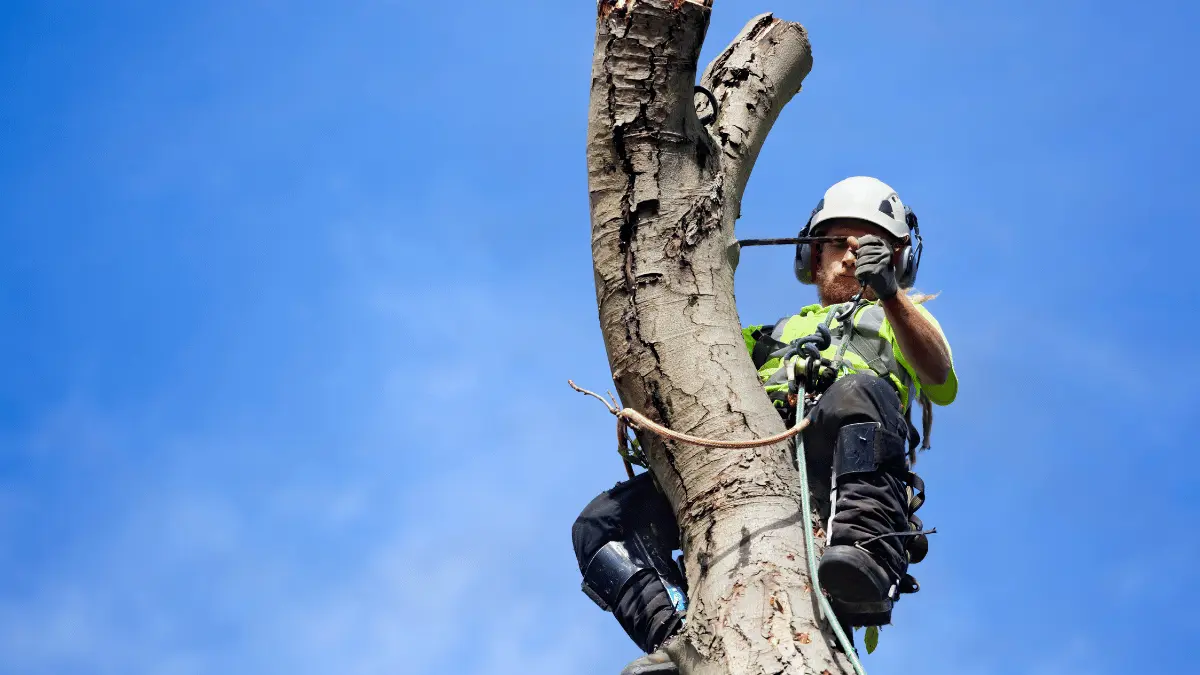Invasive plants take over quickly and damage ecosystems, thereby reducing the value of property. For a homeowner in Foxboro, understanding these plants and the risks they pose can be very important. This guide will assist you in identifying Foxboro MA invasive plants, learning about common massachusetts invasive plant species, and understanding how to manage them with professional help, such as tree service Foxboro MA.
What Are Invasive Plants?
Invasive plants are species that are not native and tend to grow quickly and spread without control. Unlike native plants, they often have no natural predators in their new environment, which lets them take over landscapes and disturb local ecosystems. Homeowners should be aware of these plants to protect both their property and the surrounding environment.

Common Massachusetts Invasive Plant Species
Tackling invasive plant species in Massachusetts is not an easy task for a lot of homeowners. One of the worst offenders is Japanese knotweed Massachusetts, a plant that can grow through concrete and asphalt and is an absolute pain to remove after it’s been established for some time. Other offenders include invasive black swallow-wort, mile-a-minute vine, and purple loosestrife.
They spread along riverbanks, roadsides, and other disturbed places. In towns, these invasive species can spread into gardens, lawns, and wooded spaces, making their early detection and control necessary.
For comprehensive information on invasive species in Massachusetts, refer to the Massachusetts Invasive Plants guide, https://www.mass.gov/info-details/invasive-plants?utm.
Identifying Foxboro MA Invasive Plants
The process of recognizing Foxboro MA invasive plants is the first line of offense in an attack plan. Japanese knotweed has bamboo stems, heart-shaped leaves, and small clusters of white flowers. It often grows along certain streams and fence lines, and it can become so dense that it displaces other vegetation.
Other species, such as the black swallow-wort, have long, slender vines with small, dark flowers. With mile-a-minute vine, it’s the sharp, thorny stems that make it so difficult to remove. Keeping these plants in check is the best way to ensure that their spread is not out of control.
The Effect of Invasive Plants on Your Property
There are a number of ways invasive plants can negatively affect your property. They might compete with your garden plants for sunlight, water, and nutrients, consequently diminishing the growth of the desirable plants. Some, like the Japanese knotweed, can even inflict damage to the foundations, driveways, and underground pipes.
Invasive species negatively affect ecosystems by replacing native species, which can negatively affect the regional fauna. Indigenous plants are the primary food source and habitats for birds, various bee species, and other pollinators. Invasive plants affect ecosystems by decreasing the species variety and changing the ecosystem.
Pest Control Recommendations for Homeowners
Once invasive plants are established, they become painstaking to remove. So, avoid planting any non-native species known for being invasive if you can help it, and simply be cautious when importing any new plant into the yard. Wash your garden tools and equipment after use so as not to jeopardize the forward transport of seeds or plant pieces.
Also, keep an eye on your yard for signs of invasive plants. When identified early, it is easy to use control methods on them before they become an uncontrollable nuisance. In being watchful, you not only protect your property but also contribute to the welfare of the local environment.

Working With Professionals
However destructive invasive plant infestations might be sometimes, larger or more unstoppable ones will require the services of professionals. Tree service foxboro MA companies provide not only the removal of occurrences but also recommendations on how to avoid future invasions. The removal of invasive plants with the assistance of an expert guarantees that they will be taken care of safely and quickly, minimizing the chances of new growth.
Restoring Your Landscape After Invasive Plants
Once invasive plants are removed, it’s essential to revitalize your landscape with native plants. Native plants grow well in the local environment and offer important food and shelter for wildlife, including birds, butterflies, and other helpful insects. Planting native species also helps prevent invasive plants from returning by filling the space in your yard that they might otherwise overtake.
Some native plants recommended for Massachusetts include red maple, serviceberry, and mountain laurel. Adding these plants to your garden creates a landscape that is not only beautiful but also sustainable and easy to maintain.
FAQs
How can I spot Japanese knotweed on my property?
Look for bamboo-like stems with heart-shaped leaves and weird clusters of minute white flowers. Typically, this plant grows in thick, tangled masses along streams, fences, and roadsides.
Are all non-natives considered invasive plants?
No, not all plants foreign to an area are considered invasive plants. The invasive plants display aggressive behavior and damage the native ecosystems.
Can I get rid of invasive plants on my own?
Small infestations can sometimes be controlled manually, but for aggressive species like Japanese Knotweed Massachusetts, it is prudent to hire a professional.
How do tree services aid invasive plants?
Tree service foxboro MA professionals can safely remove invasive plants by virtue of their equipment, knowledge, and skill, and keep you advised on how to manage them in the long term to prevent regrowth.
What do I plant after invasive species removal?
Planting native species like red maple, serviceberry, and mountain laurel will help restore your yard and prevent future invasions.
Conclusion
Keeping invasive plants under control is important for a healthy, attractive, and sustainable landscape. By recognizing Foxboro MA invasive plants, learning about common massachusetts invasive plant species, and getting professional support from tree service foxboro MA, homeowners can protect their property and take care of the local environment. Spotting issues early, removing them correctly, and restoring your yard carefully are the best ways to keep invasive plants under control.
Taking action now ensures your yard remains a safe and beautiful space for years to come.
For expert help with removing invasive plants safely and efficiently, homeowners should call KD Tree Services at (518) 625-8733.









